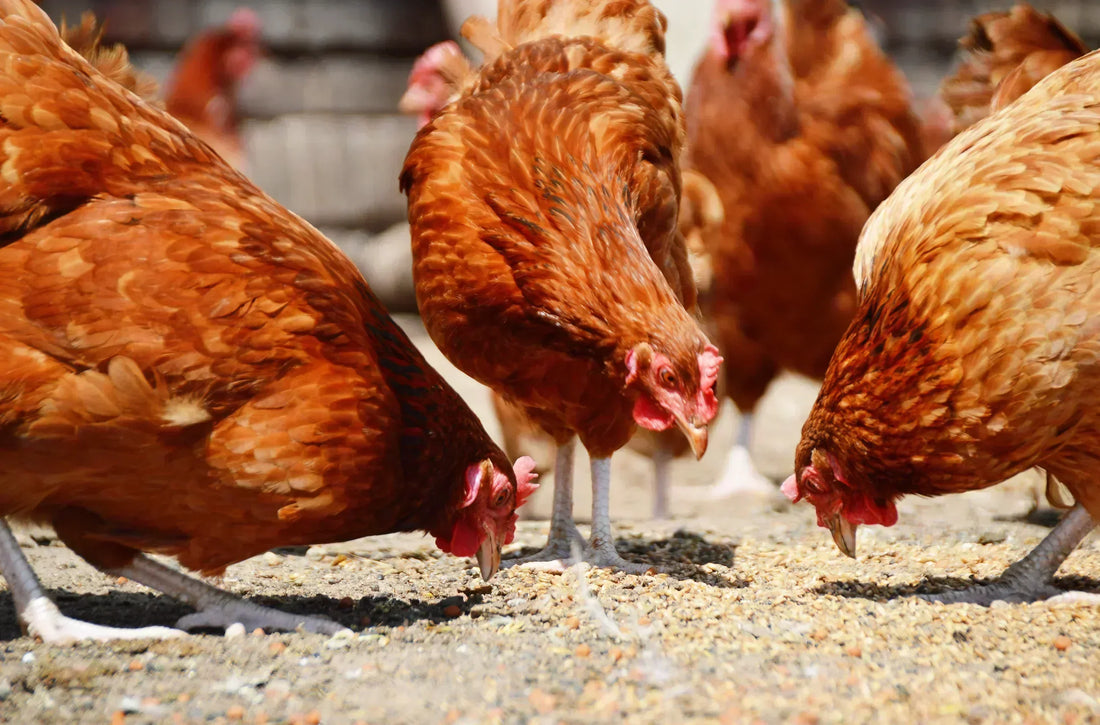
Benefits of Mealworms for Poultry: Nutrition, Enrichment & Health
Share
It's fairly commonly known that many types of poultry such as chickens and turkeys love mealworms as part of their diet, but the question people often ask is, “Is there a benefit to giving your birds mealworms?” This blog will look to answer the question: why should you feed mealworms from a nutritional, enrichment, and health perspective.

Mealworms are high in protein, fats, essential amino acids, and vitamins. They are a natural way to supplement your feathered companion’s diet in a way that not only benefits them nutritionally but also improves overall health and reduces stress by promoting natural behaviors. Mealworms are not a complete food and should be fed in moderation as they are low in calcium and do not represent a balanced diet for chickens. When fed in excess or as an exclusive food source, they can cause health issues.
Nutritionally, mealworms contain between 46–53% protein depending on what they are fed. This extra protein is important for egg-laying birds and helps maintain their condition during laying while improving egg quality. This high protein also helps poultry through their molt. Feathers are made mainly from protein, so the increased protein intake through mealworm supplementation supports efficient feather regrowth during this uncomfortable period. The exoskeleton of mealworms contains chitin, which has been shown in research studies to improve gut health by reducing populations of harmful bacteria such as salmonella in their intestines.
Feeding mealworms also acts as a form of environmental enrichment for your birds and promotes natural behaviors. When scattered or used in toys and enrichment tools, mealworms support mental well-being and reduce stress.
Use in young birds
Mealworms should be seen as a valuable addition when rearing young birds. In addition to providing the protein required for growth, their complex vitamin and amino acid structure delivers essential nutrients often missing from formulated feeds. Studies have shown that birds raised with access to insects show fewer instances of vitamin deficiency ailments, especially those related to leg weakness.

Live vs. Dried Mealworms
Why feed live mealworms over dried mealworms? In some regions, there are restrictions on dried mealworms due to concerns over sourcing and feed quality. Dried mealworms are often imported and may have been fed on animal protein, which could negatively affect egg production. Domestically produced live mealworms are typically raised on plant matter and offer better nutritional profiles. They also stimulate natural behaviors in poultry, improving both health and well-being. Live mealworms can be produced sustainably using food waste and excess vegetables.

Mealworms, while not a complete food source for poultry, are important for long-term health and should be considered a key supplement to any poultry diet.
